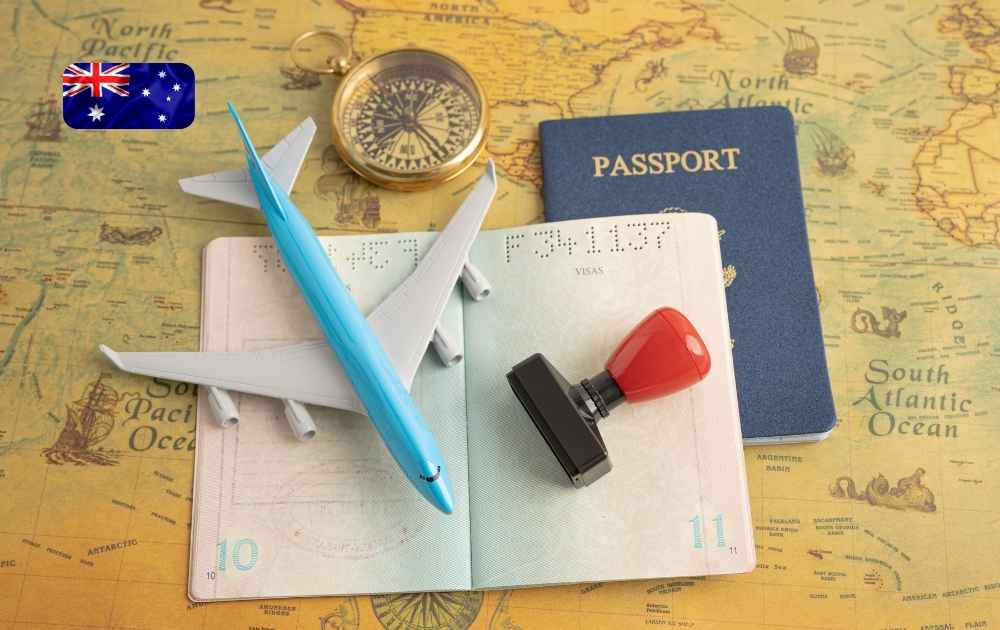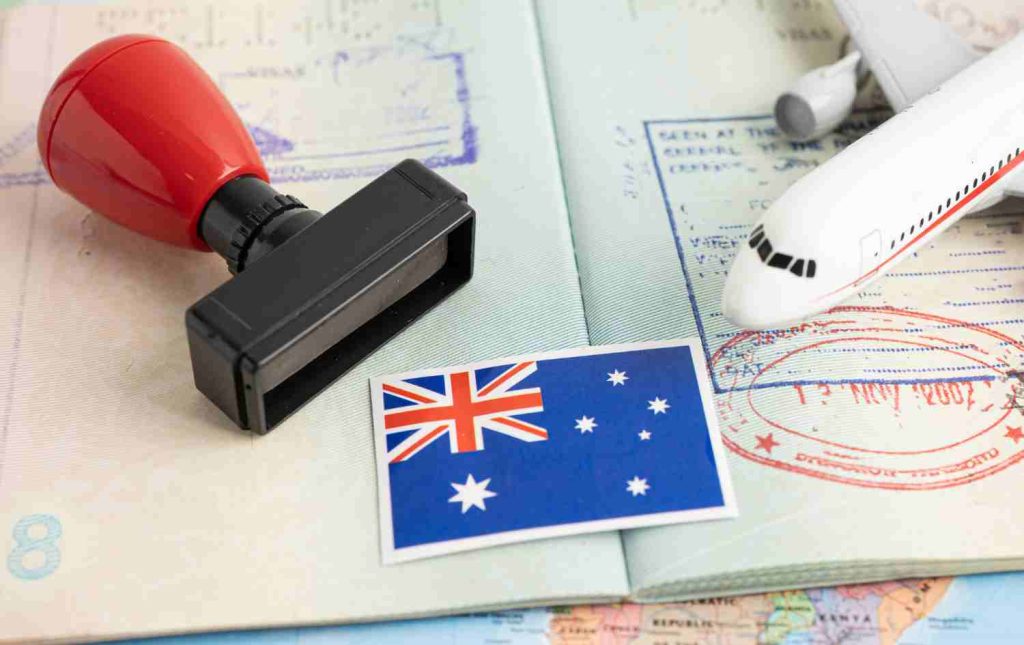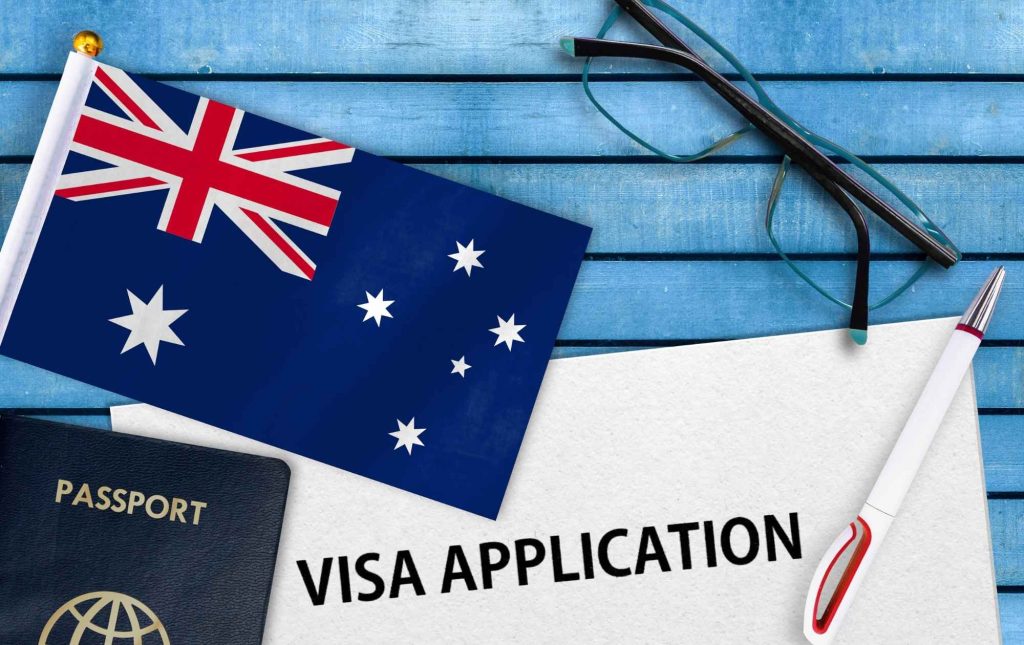Why Some Migrants Stay Broke Despite Working So Hard

Immigration July 22, 2025 Why Some Migrants Stay Broke Despite Working So Hard Bytoprate You left home a few years ago, full of ambition and dreams. Some came on a study visa, hoping to build a future after school. Others arrived on a work visa, already deep into the hustle. Fast forward to now — you’ve graduated, found work, and maybe even send money back home regularly. But in the middle of all this effort, there’s this quiet frustration: You work so hard, yet your savings don’t grow. You’re tired but not building wealth. You’re doing everything right — or at least, it feels that way — but you’re still stuck. Let’s talk about why that happens. Why Some Migrants Stay Broke 1. Just Paying Bills Without a Plan It’s easy to fall into survival mode. You work, pay rent, send money home, and maybe treat yourself once in a while. But there’s no real financial strategy — no clear savings goal, no investment plan, no emergency buffer. Before you know it, years pass, and you’re still in the same place. You’ve been working but not growing. 2. Building Houses for Rent Back Home (But Seeing Little Return) Many migrants invest in building houses back home — and at first glance, it seems like a smart, long-term plan. Property can grow in value and renting it out could create passive income over time. But here’s the issue: not all rental properties deliver real returns, especially when mismanaged. In many cases, relatives or agents trusted to oversee the home aren’t consistent, transparent, or even qualified. Rent may come in late, in small amounts, or not at all. You’ve invested thousands, but the income barely covers upkeep. Worse, you often hear “don’t worry, it’s your house” — while money quietly drains away. This doesn’t mean real estate is a bad idea. But if your property is sitting idle or bleeding off funds, it might be time to rethink the strategy. A house that doesn’t pay for itself — or worse, becomes a burden — isn’t building wealth. It’s just parked money that could have been working for you. 3. Living Without a Financial Vision Many people know how to earn money, but few stop to ask: Where am I going with all this? Without a personal vision, money becomes a cycle of earn-spend-repeat. You can live for today and still plan for tomorrow — they’re not opposites. Think about what wealth means to you. Is it financial freedom? Helping your family long-term? Own a business? Until you define that vision, your hard work may not be leading anywhere. 4. Fear of Taking Calculated Risks Yes, some investments go bad — but avoiding every opportunity because you’re afraid is just another way to stay stuck. Many migrants fear investing in businesses, stocks, or even upskilling because they think it’s “too risky.” But doing nothing is a risk too — and often a more expensive one in the long run. Calculated risks, when done right, are how people grow. No one builds wealth by playing it 100% safe all the time. 5. Lack of Financial Education Let’s face it: most of us weren’t taught how money works. We weren’t told how to manage credit, invest smartly, or create income streams. So, we wing it — and often make mistakes. But here’s the good news: financial literacy is learnable. There are podcasts, books, blogs (like this one), and real people you can learn from. You just have to want it. Let’s Not Forget the Human Side Some people are juggling two or three jobs, sacrificing sleep, and ignoring their health. Others have made hard decisions and personal sacrifices to get ahead — and while some of it pays off, it still takes a toll. And while it’s true, not everyone can be wildly rich; many can build stability, confidence, and options. If you’re reading this, chances are you’re one of them. You care. You’re thinking ahead. And that’s where it starts. So, What Can You Do Differently? Here’s the shift that changes everything: stop working just hard — start working smart. Track your spending and build a budget Set clear goals for your savings and investments Learn about financial tools and how to use them Ask questions, seek advice, and stay curious Prioritise your health and well-being — your biggest asset Final Thoughts Being a migrant comes with challenges, but it also comes with power — the power to change your story. Don’t settle for staying busy without getting ahead. You deserve more than survival. You deserve to thrive. Keep going. Keep growing. And start thinking differently about your money. Related Post Australia’s 485 Visa Extension What are the New Australian Visa Changes in 2025 for International Students? How to Bring Your Family to Australia: Family Sponsored Visa Explained What is the Visa Status of a Child Born in Australia? Australia’s 2025 Skilled Migration Hotlist Australia Employer-Sponsored Visas with English Requirements
Australia’s 485 Visa Extension

Australia’s 485 Visa Extension: Is Your Course Eligible for More Post-Study Work? Fantastic news for international students and graduates in Australia! The landscape for the Temporary Graduate (subclass 485) visa has expanded, offering a significant opportunity for longer post-study work rights. This policy, officially implemented from July 1, 2023, means that thousands of courses can now unlock an extended stay in Australia. For those already holding a 485 visa, or even if you’re just starting to plan your academic journey in Australia, grasping these updates is essential. Let’s dive into the details! The Big News: Unlock More Time in Australia! We’ve now confirmed that a remarkable 3,264 specific courses are eligible for this fantastic 485 visa extension program. This directly translates into more time for you to live, work, and gain valuable experience in Australia after graduation. Who Benefits from This Extension? Current 485 Visa Holders: If you’ve already completed one of these eligible courses and are still holding your 485 visas, you may now be able to apply for an extension. Future Graduates: If you’re currently studying, or plan to study, one of these qualifying courses, you will automatically gain the longer 485 visa duration upon completion. How longer can you stay in Australia? The extended stay, under this policy, adds two years to the current post-study work periods: Selected Bachelor’s degrees: Extended from Two years to Four years Selected Master’s Degrees: Extended from Three years to Five years All Doctoral Degrees: Extended from Four years to Six years Did You Miss Out? The “Nil VAC” Option for Extension! If you completed an eligible degree but, for some reason, didn’t automatically receive the additional two years of stay under this policy, don’t worry! The Department of Home Affairs has a solution for you. You now have the option to apply for another Temporary Graduate visa in the Post-Study Work stream at no cost (this is called a ‘nil VAC’ application, meaning ‘nil Visa Application Charge’). How it Works: If you satisfy the relevant visa criteria, the policy is to grant you this visa for a period that will provide you with an additional two years’ stay in Australia. This two-year period will be calculated from the date your current visa was originally scheduled to cease. Key Condition: To qualify for this no-cost application, you must hold a qualification that is specified in the official list of eligible courses. Find Your Course: Is It on the List? With 3,264 courses, the most important step is checking if your specific qualification is on the list! The official document, “CRICOS courses eligible for extended post-study work rights (June 2023),” is your go-to resource. How to Navigate the List: The document is organized alphabetically by the provider, and then by course level within each provider’s section. The easiest way to check your eligibility is by searching for your CRICOS course code within the document. Don’t know your CRICOS course code? You can find it on your Confirmation of Enrolment (CoE) certificate right next to your course name. Alternatively, you can always search for your course code on the official CRICOS website. Click here to download the complete list of eligible courses (F2023L00916). Key Fields: Categories of Eligible Courses While the full list linked above is definitive, here are the broad categories of courses that are particularly focused on these extended post-study work rights. These are generally high-demand fields that contribute to Australia’s skilled workforce, giving you an idea of the sectors where your qualification might lead to a longer stay: Category Description Engineering Encompasses disciplines focused on the design, construction, and maintenance of structures, machines, systems, and processes. Includes civil, mechanical, electrical, software, and other specialized engineering fields critical for infrastructure and innovation. ICT Covers Information and Communication Technology, including fields related to computer systems, software development, data science, cybersecurity, network administration, and digital media, crucial for the modern digital economy. Medical and Nursing Pertains to direct patient care, health diagnosis, treatment, and public health initiatives. This includes qualifications for registered nurses, doctors, medical scientists, and other core healthcare professionals vital for community well-being. Allied Health A diverse group of healthcare professions distinct from medicine and nursing, offering diagnostic, technical, therapeutic, and support services. Examples include physiotherapy, occupational therapy, speech pathology, psychology, and dietetics. Agriculture Focuses on the science and practice of farming, food production, animal husbandry, horticulture, and sustainable land management. This category addresses the critical needs of Australia’s agricultural sector and food security. Teaching Involves the education and instruction of students across all levels, from early childhood to tertiary. Programs in this category prepare professionals for roles in schools, universities, and other educational institutions, addressing critical skills shortages in education. Professional Health Often refers to highly specialized health disciplines requiring advanced qualifications, sometimes focusing on specific areas like dental science, veterinary science, or public health management, which play a crucial role in broader health outcomes and animal welfare Diagnostic Encompasses fields dedicated to identifying diseases and conditions through various scientific and technical methods. This includes medical radiation science (radiography, nuclear medicine, radiation therapy), laboratory medicine, and other diagnostic imaging or pathology services. Other This is a broader category that includes various eligible Doctoral degrees (regardless of specific field, as all PhDs qualify for the extension), and certain other Bachelor’s or Master’s programs that might not fit precisely into the more specialized categories above but are still recognized for contributing to Australia’s skilled workforce needs. This reflects the diverse range of skills needed across the economy Your Future in Australia Starts Now! This 485-visa extension is a significant opportunity to build your career and future in Australia. Take advantage of it by checking your eligibility, understanding the process, and making your move. Don’t miss out on gaining those crucial extra years of post-study work experience. Check the list today and plan your next step! Related Post What are the New Australian Visa Changes in 2025 for International Students? Learn more How to Bring Your Family to Australia: Family Sponsored Visa Explained
What are the New Australian Visa Changes in 2025 for International Students?

What are the New Australian Visa Changes in 2025 for International Students? As an international student in Australia, staying up-to-date with the latest visa changes is crucial to ensuring a smooth and successful study experience. With the Australian government introducing new visa changes in 2025, it’s essential to understand how these changes affect you and your future plans. In this post, we’ll break down the key changes, provide guidance on how to navigate them, and offer valuable tips to help you achieve your goals. Understanding the New Visa Changes The Australian government has introduced several changes to the visa program, aimed at improving the integrity of the system, supporting economic growth, and enhancing the overall student experience. Some of the key changes include: Revised Student Visa Requirements: The government has introduced new requirements for student visa applications, including enhanced English language proficiency, increased financial capacity, and stricter Genuine Temporary Entrant (GTE) criteria. New Skills in Demand Visa: The Skills in Demand Visa (Subclass 482) has replaced the Temporary Skill Shortage (TSS) visa, offering a more streamlined process for skilled workers. Changes to Post-Study Work Rights: The government has introduced new post-study work rights, allowing eligible graduates to work in Australia for various periods depending on their degree level and nationality. Impact on International Students The new visa changes will have a significant impact on international students in Australia. Here are some key implications: Stricter Eligibility Criteria: International students will need to meet stricter eligibility criteria, including enhanced English language proficiency and increased financial capacity. New Visa Application Process: The new visa application process will require international students to provide additional documentation and information. Changes to Work Rights: International students will need to understand the changes to post-study work rights and how they affect their ability to work in Australia. Navigating the Changes: A Step-by-Step Guide To ensure a smooth transition, follow these steps: 1. Check Your Eligibility: Review the new visa requirements and ensure you meet the eligibility criteria. 2. Gather Required Documents: Make sure you have all necessary documents, including enhanced English language proficiency test results, financial statements, and academic transcripts. 3. Apply for a New Visa (If Required): If your current visa is expiring or you need to apply for a new visa, submit your application as soon as possible. 4. Update Your Records: Ensure your records are up-to-date, including your student visa, passport, and academic documents. Tips for International Students To make the most of these changes, consider the following tips: Stay Informed: Regularly check the official government website and consult with your education provider for the latest updates. Plan Ahead: Allow sufficient time to apply for a new visa or update your records. Seek Professional Advice: Consult with a registered migration agent or education expert to ensure you’re meeting the requirements. Common Questions and Answers Here are some common questions and answers to help you navigate the new visa changes: What are the new English language proficiency requirements in Australia? The new English language proficiency requirements include a minimum IELTS score of 6.5 or equivalent. How do I apply for a new Australian visa? You can apply for a new visa through the Australian Government’s Department of Home Affairs website. What are the changes to post-study work rights in Australia? The changes to post-study work rights include reduced maximum eligible age to 35 years or under, with some exceptions for applicants under 50 using a Masters (research) or Doctoral Degree (PhD), or holding a Hong Kong or British National Overseas passport. Stay periods have also changed, ranging from 2-5 years depending on the degree level and nationality. Conclusion The new visa changes in 2025 may seem complex, but with the right guidance, you can navigate them successfully. Remember to stay informed, plan ahead, and seek professional advice when needed. By following these steps and tips, you’ll be well on your way to achieving your academic and professional goals in Australia. Related Post Australia’s 485 Visa Extension Learn more What are the New Australian Visa Changes in 2025 for International Students? Learn more How to Bring Your Family to Australia: Family Sponsored Visa Explained Learn more
How to Bring Your Family to Australia: Family Sponsored Visa Explained

Immigration March 12, 2025 How to Bring Your Family to Australia: Family Sponsored Visa Explained ByTaiwo Abimbola The dream of reuniting with loved ones in Australia is a powerful motivator for many. Whether it’s a partner, parent, child, or another cherished family member, the Family Sponsored Visa offers a pathway to transform those aspirations into reality. Designed to facilitate family reunification, this visa enables eligible relatives to migrate to Australia, provided they fulfill specific requirements. Let’s delve into the details and clarify how you can bridge the distance and bring your family closer. What is a Family Sponsored Visa? The Family Sponsored Visa is a designated pathway that enables Australian citizens, permanent residents, and eligible New Zealand citizens to sponsor their family members for migration to Australia. This visa category encompasses several subclasses, each tailored to accommodate diverse family relationships. Consequently, whether you intend to bring your partner, parent, or child to Australia, a suitable visa option exists. Types of Family Sponsored Visas 1. Partner Category Visa If you’re in a committed relationship, the Partner Category Visa is for you! This visa allows spouses, fiancés, and partners (including same-sex partners) to immigrate to Australia. Initially, you’ll be granted temporary residency, but after a couple of years, you can transition to permanent residency. It’s a fantastic way to start your life together in Australia! 2. Parent Visa Do you have children living in Australia? The Parent Visa might be the perfect option for you. This visa allows parents of Australian citizens or permanent residents to join their families down under. There are different types of Parent Visas, including the Contributory Parent Visa, which offers faster processing for a higher fee. Just keep in mind that there’s a limited number of Parent Visas issued each year, so it’s essential to get your application in early! 3. Child Visa The Child Visa is designed for children of eligible sponsors. If you’re a parent living in Australia, you can sponsor your child to live with you permanently. There are different subclasses for onshore and offshore applicants, so no matter where your child is, there’s a pathway for them to join you. 4. Other Family Members Don’t worry if you’re looking to bring other family members! Siblings, dependent relatives, and carers can also apply for temporary visas that can later be converted to permanent residency. This option allows you to keep your family close, no matter the distance. The Application Process: Step by Step Ready to take the plunge? Here’s a quick overview of the steps involved in applying for a family-sponsored visa: Find an Eligible Sponsor: Ensure you have an Australian citizen, permanent resident, or eligible New Zealand citizen who can sponsor you. Gather Your Documents: Collect all necessary documents, including proof of identity, relationship evidence, and financial statements. Don’t worry; we’re here to help you navigate this! Submit Your Application: You’ll need to submit your application online through the Department of Home Affairs website. Make sure all your information is accurate to avoid delays. Wait for Processing: After submission, your application will be processed. This can take anywhere from a few weeks to several months, depending on various factors. Stay Informed: Keep an eye on your application status and be ready to provide any additional information if requested. Common Questions About Family Sponsored Visas Who can sponsor a family member? Only Australian citizens, permanent residents, and eligible New Zealand citizens can act as sponsors. Can family members work in Australia on a Family Sponsored Visa? Yes! Most family-sponsored visa holders can work in Australia. Is there a financial requirement for sponsors? Yes, sponsors must demonstrate they can support their family members financially during their stay. Can a Family Sponsored Visa lead to permanent residency? Absolutely! Many family-sponsored visas can transition to permanent residency after meeting specific conditions. What types of family relationships are eligible for sponsorship? Eligible relationships include partners, parents, children, siblings, and other dependent relatives. What documents are required for a Family Sponsored Visa application? Required documents typically include proof of identity, relationship evidence, financial statements, and health assessments. How long can family members stay in Australia on a Family Sponsored Visa? The duration of stay varies by visa subclass, but many allow for stays of up to 12 months or longer. What are the processing times for Family Sponsored Visas? Processing times can vary widely based on the visa subclass and the completeness of the application, ranging from a few weeks to several months. Can I include my children in my Family Sponsored Visa application? Yes, children can be included in the application, provided they meet the eligibility criteria. Are there any health or character requirements for Family Sponsored Visa applicants? Yes, applicants must meet health and character requirements, which may include medical examinations and police clearances. What happens if my Family Sponsored Visa application is denied? If denied, you may have the option to appeal the decision or reapply, depending on the reasons for the denial. Can I apply for a Family Sponsored Visa while I’m in Australia on another visa? Yes, you can apply for a Family Sponsored Visa while in Australia, but you must comply with the conditions of your current visa. Is there a limit to the number of family members I can sponsor? While there is no strict limit, each application is assessed individually, and sponsors must meet specific requirements for each family member. What are the common reasons for Family Sponsored Visa refusals? Common reasons include incomplete documentation, insufficient financial support, and failure to meet health or character requirements. Can I sponsor a family member who is currently in Australia on a different visa? Yes, you can sponsor a family member who is in Australia on another visa, provided they meet the eligibility criteria for the Family Sponsored Visa. What support can I expect from migration agents when applying for a Family Sponsored Visa? Migration agents can assist with document preparation, application submission, and communication with immigration authorities to ensure a smooth process.
What is the Visa Status of a Child Born in Australia?

Immigration February 26, 2025 What is the Visa Status of a Child Born in Australia? ByTaiwo Abimbola When a child is born in Australia, it’s a momentous occasion for the family. However, it also raises important questions about the child’s visa status and citizenship. As a parent, understanding the visa status of your child born in Australia is crucial to ensure their rights and privileges are protected. In this comprehensive guide, we’ll break down the rules and regulations surrounding the visa status of children born in Australia. The Fundamental Rule Before we dive into the specifics, let’s cover some fundamentals. The visa status of a child born in Australia depends on the parents’ visa status at the time of birth. The Australian government has laws in place to determine the citizenship and visa status of children born in the country. Born in Australia: Understanding Your Child’s Status If your child was born in Australia, here are the relevant details: Australian Citizen Parents: If at least one parent is an Australian citizen, your child becomes an Australian citizen by birth. No separate application is required. An Australian passport is necessary for international travel. Visit the Australian Passport Office website to apply for a passport. To obtain proof of citizenship, apply online for Evidence of Australian Citizenship. Permanent Resident Parents: Similar to citizen parents, if one parent is an Australian permanent resident, your child becomes an Australian citizen by birth. An Australian passport is required for travel. Apply for the passport via the Australian Passport Office website. To obtain proof of citizenship, apply online for Evidence of Australian Citizenship. Temporary Visa Holder Parents: If you hold a temporary visa (excluding a special purpose visa), your child is granted the same visa as you. You must notify the Department of Home Affairs. If you have an ImmiAccount, upload the following documents: Form 1022 – Notification of changes in circumstances Your child’s Australian birth certificate (color scan) Your child’s passport pages (color scan) If you do not have an ImmiAccount, notify by post with certified copies. Notification is essential for: Access to Visa Entitlement Verification Online (VEVO) Avoiding travel delays Note: Children born in Australia on or after August 20, 1986, acquire citizenship if they have resided in Australia for 10 years, regardless of parents’ status. When a child is born in Australia, it’s a momentous occasion for the family. However, it also raises important questions about the child’s visa status and citizenship. As a parent, understanding the visa status of your child born in Australia is crucial to ensure their rights and privileges are protected. In this comprehensive guide, we’ll break down the rules and regulations surrounding the visa status of children born in Australia. Born Outside of Australia: Navigating Different Regulations If your child was born outside Australia, the regulations differ: Australian Citizen Parents: Your child may be eligible for Australian citizenship by descent. This process requires an application. Obtain the Australian citizenship by descent extract before applying for a passport. Your child can travel to Australia on another country’s passport with a visitor visa if they do not have Australian citizenship by descent yet. Permanent Resident Parents: Your child will require a visa. Consider these options: Child (subclass 101) visa Adding them to a Partner or Prospective Marriage visa application A temporary visa such as a visitor visa. Temporary Visa Holder Parents: Your child will require a visa. For specific visas (listed below), you can apply for a ‘subsequent entrant’: Business Innovation and Investment (provisional) (subclass 188) visa Skilled Regional (provisional) (subclass 489) visa Student (subclass 500) visa Temporary Work (International Relations) (subclass 403) visa Training (subclass 407) visa Temporary Activity (subclass 408) visa Temporary Work (Skilled) (subclass 457) visa Temporary Skills1 Shortage (subclass 482) visa Skills in Demand (subclass 482) visa Skilled Employer Sponsored Regional (subclass 494) visa Skilled Work Regional (subclass 491) visa For other temporary visas, apply for a new visa. If you have a pending visa application, your child will be added after you notify the department. The following table provides a summary of the visa status of children born in Australia: Parent Status Born in Australia Born Outside Australia Australian Citizen Citizen by birth Citizen by descent Permanent Resident Citizen by birth Visa required Temporary Visa Holder Temporary visa Visa required Determining Your Child’s Status The Department of Home Affairs provides an online tool to determine your child’s status. It utilizes questions regarding your child’s birthplace and your visa status. Key Child Visa Considerations Department Notification: Always notify the Department of Home Affairs of your child’s birth. Visa Conditions: Your child’s visa will align with your own. Travel Documentation: Your child requires a passport for international travel. Citizenship Documentation: If your child is an Australian citizen, an Australian passport is recommended. Visa Requirements: Your child must meet all visa requirements. Frequently Asked Questions of Child Born in Australia Here are some frequently asked questions about the visa status of children born in Australia: Does my child automatically become a citizen if born in Australia? It depends on your visa status. If you are a citizen or permanent resident, then yes. Otherwise, your child will take on your visa status, or need to apply for a new visa. What if my visa application was refused? You must still notify the Department of your child’s birth. Can my child travel on my passport? No, children require their own passport to travel. Do I need to notify the Department of Home Affairs about my child’s birth? Yes, notification of your child’s birth is essential to ensure their visa status is correct. How do I apply for Australian citizenship by descent for my child? You can apply for Australian citizenship by descent through the Australian Department of Home Affairs website or by consulting with a registered migration agent. Conclusion Understanding the visa status of a child born in Australia can be complex, but it’s essential to ensure your child’s rights and privileges are protected. By following the
Australia’s 2025 Skilled Migration Hotlist

Australia’s 2025 Skilled Migration Hotlist Big news! Australia is opening its doors to skilled workers in 2025, and guess what? The top occupations list is out! If you’re dreaming of working Down Under, now’s the time to find out if your profession made the cut. Let’s ride into the details. Why You Should Care About Australia’s 2025 Skilled Occupations List Australia isn’t just about beaches and kangaroos. It’s about endless career opportunities, better pay, and a high-quality lifestyle. Here’s why you should pay attention: High demand for skilled professionals. Faster visa processing for listed occupations. Clear paths to permanent residency. FAQ: How can I determine if I am qualified for Australia’s Skilled Migration program? Check your occupation’s ANZSCO code, ensure you meet the educational and experience requirements, and complete a skills assessment if necessary. Meeting language proficiency standards and health checks is also essential. 2025’s Most In-Demand Occupations Healthcare Heroes: Registered Nurses (Aged Care, Critical Care) General Practitioners and Medical Specialists Engineering Experts: Civil, Mechanical, and Electrical Engineers Tech Wizards: Software Engineers, Data Scientists, and IT Specialists FAQ: How do I know if I am a skilled worker for Australia’s Skilled Migration program? To be considered a skilled worker, your occupation must be listed on the Core Skills Occupation List (CSOL). You’ll also need relevant qualifications, work experience, and potentially a skills assessment by an Australian authority. Top Occupations List Occupation ANZSCO Code Registered Nurse (Aged Care) 254412 Mechanical Engineer 233512 Software Engineer 261313 Electrician 341111 Trending Fields: Renewable Energy AI and Machine Learning Aged Care Visa Options You Can’t Ignore Skills in Demand (SID) Visa: For temporary jobs in top-demand fields. Essential Skills Stream: Covers industries that need urgent support. Permanent Residency Pathways: Available for many skilled professions. FAQ: Does my work experience affect my eligibility for skilled migration to Australia? Yes, your years of experience are crucial. The more relevant experience you have, the higher your points in the migration assessment system, increasing your chances of receiving an invitation to apply. Conclusion Australia’s 2025 Skilled Migration List offers exciting opportunities for skilled professionals ready to explore new horizons. With high demand across key sectors like healthcare, engineering, and technology, now is the perfect time to take the leap. Understanding your eligibility, visa options, and the migration process is essential — and once you’re set, the possibilities are endless. Related Post What is the Visa Status of a Child Born in Australia? Learn more Australia’s 2025 Skilled Migration Hotlist Learn more Australia Employer-Sponsored Visas with English Requirements Learn more
Australia Employer-Sponsored Visas with English Requirements

Australia Employer-Sponsored Visas with English Requirements Thinking About an Employer-Sponsored Visa? Let’s Talk English Requirements So, you’ve got a job offer in Australia—exciting! But before packing your bags, there’s one important step: meeting the English language requirement. Every employer-sponsored visa, including the Temporary Skill Shortage (TSS) visa (subclass 482), Skilled Employer-Sponsored Regional (Provisional) visa (subclass 494), and Employer Nomination Scheme (ENS) visa (subclass 186), comes with specific English standards. This guide breaks it all down—what score you need, which tests are accepted, and how to meet the requirement with confidence. English Language Requirements for Employer-Sponsored Visas Australia requires proof of English proficiency to ensure effective workplace communication. Here’s what each visa type requires: Temporary Skill Shortage (TSS) Visa (Subclass 482) Minimum IELTS 5.0 overall, with no band below 4.5 (or equivalent in PTE, TOEFL, or OET). Some skilled trade roles may require higher scores depending on licensing requirements. Skilled Employer-Sponsored Regional (Provisional) Visa (Subclass 494) IELTS 6.0 in all bands (or equivalent). Employer Nomination Scheme (ENS) Visa (Subclass 186) & Regional Sponsored Migration Scheme (RSMS) Visa (Subclass 187) Requires Competent English — IELTS 6.0 in all bands (or equivalent). Accepted English Tests for an Australian Work Visa Australia’s Department of Home Affairs accepts multiple tests, allowing applicants to choose the most suitable option: IELTS (International English Language Testing System) – The most commonly used test. PTE Academic (Pearson Test of English) – A fast-results option. TOEFL iBT (Test of English as a Foreign Language) – An online-based test. OET (Occupational English Test) – Designed for healthcare professionals. Cambridge C1 Advanced – A valid option for those who have already taken it. English Test Exemptions for Employer-Sponsored Visas Some applicants may be exempt from the English test. Exemptions apply to those who: Hold a passport from an English-speaking country (UK, USA, Canada, New Zealand, Ireland). Have studied in English for at least five years in Australia, Canada, New Zealand, the UK, USA, or Ireland. Qualify under specific employer exemptions, though these are limited. How to Meet the English Requirement Without Stress Preparing for the test doesn’t have to be overwhelming. Follow these steps to improve your chances of success: Understand the requirements – Different visas require different scores, so focus on your specific category. Practice regularly – Use official test preparation materials to get familiar with the format. Take a short English course if needed – A structured program can strengthen weak areas and boost confidence. Book the test at the right time – Scores remain valid for up to three years, so plan accordingly. Meeting the English language requirement is an important step toward securing an employer-sponsored visa. Understanding the specific test scores needed for different visa types can help you plan ahead and improve your chances of approval. With the right preparation, you’ll be one step closer to building your career in Australia. Need to send money home or access financial support? Get Started Now! Related Post Immigration Why Some Migrants Stay Broke Despite Working So Hard toprate July 22, 2025 AustraliaImmigration Australia’s 485 Visa Extension Taiwo Abimbola June 19, 2025 AustraliaImmigration What are the New Australian Visa Changes in 2025 for International Students? Taiwo Abimbola March 21, 2025 AustraliaImmigration How to Bring Your Family to Australia: Family Sponsored Visa Explained Taiwo Abimbola March 12, 2025 AustraliaImmigration What is the Visa Status of a Child Born in Australia? Taiwo Abimbola February 26, 2025 AustraliaImmigration Australia’s 2025 Skilled Migration Hotlist Taiwo Abimbola February 18, 2025
How to Successfully Apply for an Australian Visa

Step-by-Step Guide to Successfully Apply for an Australian Visa The first step to your Australian adventure is securing an Australian visa. It might seem overwhelming, but don’t worry! We’re here to guide you through the entire Australian visa application process, step-by-step. Whether you’re planning a vacation, studying, working, or starting a new life in Australia, this comprehensive guide will equip you with the knowledge and tools to successfully apply for your Australian visa. Let’s embark on this journey together and turn your Australian dream into a reality! Step 1: Identify Your Purpose of Visit to Apply for the Right Australian Visa The first step in your Australian visa journey is figuring out why you’re heading Down Under. Australia offers a variety of visas to cater to different purposes. Understanding your reason for visiting will help you determine the correct visa subclass to apply for. Here are some common reasons for visiting Australia and their corresponding visa types: Tourism: If you’re planning a vacation to explore Australia’s stunning beaches, vibrant cities, and diverse wildlife, you’ll likely need a tourist visa (subclass 600). Business: For business-related activities like attending meetings, conferences, or exploring potential investment opportunities, a business visitor visa (subclass 600) might be suitable. Study: If you want to pursue higher education or vocational training in Australia, you’ll need a student visa (subclass 500). Work: For work purposes, Australia offers various work visas based on your skills and experience, such as the Skilled Independent visa (subclass 189), Skilled Nominated visa (subclass 190), and Temporary Skill Shortage visa (subclass 482). Family: If you’re joining family members in Australia, you might be eligible for a family visa. Remember, this is just a general overview. The specific visa requirements and eligibility criteria can vary depending on your individual circumstances. It’s essential to check the official Department of Home Affairs website for the most accurate and up-to-date information. By clearly defining your purpose of visit, you’ll be able to narrow down your visa options and focus your application efforts accordingly. Step 2: Check Specific Visa Subclass Requirements for Your Australian Visa Application Once you’ve determined your purpose for visiting Australia, it’s time to delve deeper into the specific visa subclass that aligns with your plans. Each visa subclass has its own set of eligibility criteria, documents, and application processes. Let’s break it down: Research: Visit the official Department of Home Affairs website to find detailed information about the visa subclass you’re interested in. Pay close attention to eligibility requirements, as these can vary based on your nationality, occupation, financial status, and other factors. Understand the Requirements: Familiarize yourself with the specific documents needed for your chosen visa subclass. This might include proof of funds, health insurance, police certificates, or academic qualifications. Assess Your Eligibility: Honestly evaluate whether you meet all the eligibility criteria. It’s better to have a clear understanding of your situation before starting the application process. By thoroughly researching and understanding the visa subclass requirements, you’ll increase your chances of a successful Australian visa application. Remember, it’s always better to be over-prepared than underprepared. If you’re unsure about which visa subclass is right for you, consider using the Department of Home Affairs’ Visa Finder tool to get personalized guidance. Step 3: Gather Essential Documents for Your Australian Visa Application Collecting the right documents is crucial for a smooth Australian visa application process. The specific documents you’ll need will depend on the visa subclass you’re applying for. However, there are some common documents required for most visa types. Essential Document Checklist Valid passport: Ensure your passport is valid for at least six months beyond your intended departure date from Australia. Passport-sized photos: You’ll need recent passport-sized photos that meet the Australian visa photo requirements. Proof of identity: This might include birth certificates, marriage certificates, or national identity cards. Financial documents: To demonstrate your ability to support yourself financially during your stay in Australia, you may need to provide bank statements, proof of employment, or evidence of savings. Health insurance: Some visa subclasses require proof of adequate health insurance coverage for your entire stay. Police certificates: Depending on your visa type and personal circumstances, you might need to provide police certificates from countries where you’ve lived for an extended period. Step 4: Prove Financial Capacity for Your Australian Visa Application Demonstrating your financial capability is essential for many Australian visa applications. The required financial evidence varies based on the visa subclass and your personal circumstances. Here are some common ways to prove your financial capacity: Bank statements: Provide recent bank statements showing sufficient funds to cover your living expenses in Australia. Proof of employment: If you’re employed, provide salary slips or employment letters to demonstrate your income. Sponsorship: If someone in Australia is sponsoring your visit, you might need to provide a sponsorship letter and proof of their financial capacity. Step 5: Meet Health and Character Requirements for Your Australian Visa Australia places importance on the health and character of its visa applicants. Depending on the visa subclass, you might need to undergo a health examination and provide a police certificate. Health examination: This involves medical tests to assess your health and determine if you meet Australia’s health requirements. Police certificate: A police certificate is a document issued by your home country’s police authorities that verifies your criminal history. By diligently gathering all the required documents, proving your financial capacity, and meeting health and character requirements, you’ll significantly increase your chances of a successful Australian visa application. Remember, it’s essential to provide accurate and complete documentation to avoid delays or refusals. Step 6: Complete the Online Australian Visa Application Form With your documents in order, it’s time to tackle the online Australian visa application form. The Department of Home Affairs has an online system called ImmiAccount where you can create a profile, select your visa subclass, and fill out the application form. Create an ImmiAccount to Start Your Australian Visa Application The first step is to create an ImmiAccount. This online portal will be


